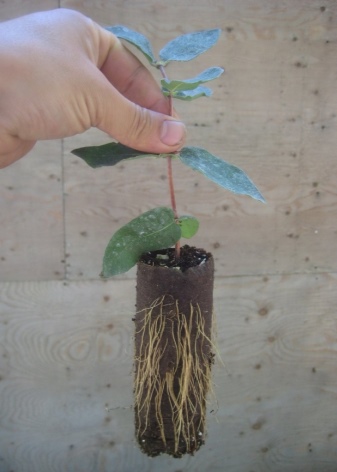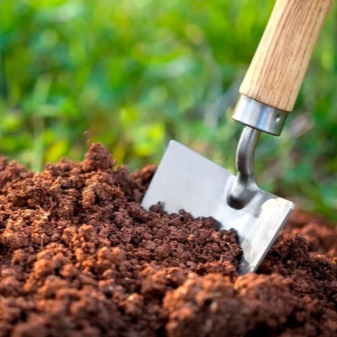All about propagation of honeysuckle by cuttings

Propagation of honeysuckle by cuttings in spring is considered a simple and effective way. But for the success of this procedure, it is necessary to pay enough attention not only to the planting itself, but also to the selection of the shoots used.


Parent plant selection
A properly selected parent plant ensures the rooting of the material outdoors. Besides, the use of cuttings allows you to almost completely preserve the outstanding characteristics of the mother bush. In order for reproduction to be successful, it is initially necessary to pick up a bush of a favorite variety, which is distinguished by health and strength. No less important is the absence of traces of diseases or insect activity on the plant. It is necessary to evaluate in advance all the characteristics of the variety: how large and sweet the fruits grow, whether it is afraid of low temperatures and whether it copes with a long absence of watering.
By the way, if you plan to divide the rhizomes, then the age of the specimen should reach at least 5-6 years. In other cases, preference can be given to younger bushes.

Types of cuttings
Honeysuckle can be propagated by two types of shoots: green and lignified.
Green
Green material for cultivation is collected at the junction of spring and summer, when flowering has come to an end and the formation of ovaries has begun. This period, however, in some regions may shift to the interval from mid-June to mid-July. Before separating the cuttings from the mother bush, they should be checked. An easy way is to try to bend them: the more elastic the branch is, the worse it will take root. It is recommended to take only the vine that breaks at the folds.
In the future, only the middle part of the selected shoots will be used. It is also worth mentioning that it is better to use one-year-old shoots that are actively developing, and therefore still rich in nutrients. The diameter of the one-year growth should be at least 1 centimeter. You should not cut off the branches too early, since very young shoots take root rather poorly. The soft and grassy top of the shoots is not suitable for reproduction.
For grafting, you will need fragments of branches from 7 to 12 centimeters long, having at least 3 internodes, each of which contains a bud with a leaf. When trimming the vine, it is necessary to make sure that the bottom of the workpiece is cut at an angle of 45 degrees, and the top remains straight and rises above the bud at a distance of 1.5 centimeters. In addition, the leaf blade must be removed from the lower node, and on the other two it is shortened by half. The lower part of the workpiece must be treated with Kornevin or Heteroauxin. These drugs stimulate the appearance of roots, and also provide protection against fungal infection and the development of putrefactive processes.


Lignified
Some gardeners prefer to grow honeysuckle using lignified twigs. They are collected twice a year: either in early spring, when the buds have not yet begun to open, or in late autumn, after the leaves fall. When exactly to cut the cuttings, each honeysuckle breeder decides on his own, focusing on the weather conditions of his own region.It is preferable to choose shoots that are already 2 years old or more, cutting branches after they are covered with a coarse crust of brown or gray shades. Nevertheless, you should not take too old copies, since they hardly produce roots and almost never take root.
If it happens in the fall, then segments about 20 centimeters long with 3-5 internodes will be required. For spring collection, the use of shorter cuttings is characteristic: from 10 to 12 centimeters long. The upper cut of such blanks is made straight, at a distance of 0.5 centimeters from the kidney, and the lower one - at an angle, while it is necessary to retreat by 1.5 centimeters from the extreme kidney. The harvested material requires special storage conditions.


First, all the branches are folded into a box filled with wet sand or sawdust, and then they are carried away for storage in the basement. You can wrap the fragments of the shoots in burlap and also take them to a cool place. Finally, some summer residents prefer to bury workpieces in the garden trench in the spring.
Whatever the substrate into which the cuttings are buried, it should first be impregnated with biological fungicides that prevent the development of fungal diseases. It should be mentioned that lignified shoots are coarser and drier, and therefore rather slowly form a root system. The seedlings obtained from them have low immunity, are often attacked by pests and take root less well. Therefore, such cuttings are used most often as training. Then summer residents make a choice in favor of green copies. Some gardeners prefer combined shoots - cuttings with part of an annual branch. They are cut after flowering is complete, usually in late May or even early summer.
It is allowed to use blanks that already have 1-2 small branches. They will take root and take root in a new place better than lignified, but still worse than green.


Timing of grafting
Green cuttings harvested in spring must be planted immediately for germination. If lignified blanks are chosen for reproduction, then they have to be stored until the first days of spring, and then they should be planted in containers and begin to germinate. It is necessary to directly cuttings, that is, to plant seedlings obtained from blanks in open ground, depending on the climatic characteristics of the region.
Usually, the transportation of young bushes to the garden takes place from the end of summer and almost until the end of October. The warmer the region in which the honeysuckle is grown, the later the final procedure can be carried out, since the plant will still have time to take root in a new place.


Features of the procedure
After the branches intended for green cuttings are cut, they must be immediately removed from the sun and placed in a container with water to slow down the evaporation of moisture. An alternative is a bucket lined with a cloth soaked in water and covered with paper. Then the workpieces are cut according to the scheme indicated above, with a necessarily disinfected and sharp tool. In the next step, they should be rooted. Typically, the sprouting twigs are placed in pots or boxes, covered with plastic or plastic bottles, although you can try to organize this stage in a greenhouse.
To stimulate the appearance of roots, the first internode must be treated with a special agent. For example, for this purpose, from 50 to 200 milligrams of "Heteroauxin" is diluted in 1 liter of water. The cuttings are kept in the solution for 12 hours or even a whole day, but there is no point in soaking them completely: it is enough to soak the lower 2-3 centimeters. At the next stage, the workpieces are immersed in the soil to the first internode, while adhering to an angle equal to 45-60 degrees.There is a gap of 4-5 centimeters between the individual cuttings, and the gap between the rows is 7 to 10 centimeters. The container must be tightened with cling film or covered with a half of a plastic container. During the day, the cover will need to be lifted, especially on hot and sunny days, to provide ventilation for the honeysuckle.
The soil for planting cuttings should be loose and breathable. It is important to have all the necessary nutrients and high humidity. For culture, both a ready-made and a substrate taken from the garden, supplemented with sand and organic matter, are suitable. The combination of peat and coarse sand is good. The components are used in the same proportions, or the sand is used 2-3 times more. The prepared substrate is disinfected with freshly boiled water or a pale pink manganese solution, after which it is poured into a layer of 5 centimeters on a universal soil.
At the bottom of the container, it will be mandatory to lay out a drainage layer of pebbles or gravel. It should be added that the cuttings of the culture can also be germinated in water.


The stick is immersed in liquid up to the first internode. The water is periodically changed and supplemented with stimulants. When the roots hatch at the branch, it can be placed in a pot or in a greenhouse. Before transplanting to a permanent habitat, cuttings should be irrigated regularly: every day in the presence of the sun and every other day in cloudy weather. Several times a day of planting will have to be sprayed with a spray bottle to maintain a humidity level of 95%. The rooting material should not be in direct sunlight: to create a shadow, it will be enough to attach a couple of layers of gauze to the plastic wrap from the inside. After the roots appear, care is reduced: spraying stops, and irrigation is carried out as the soil dries up.
When the plant has a well-developed root system, it can be planted in the open field together with an earthy clod. Such a stressful procedure is carried out precisely in the fall, since the shrub at this time is at rest, and therefore suffers transplants and root injury with less losses. When propagated by lignified cuttings, the material is rooted in loose soil so that 1-2 buds remain above the surface. The distance between individual specimens should reach 10-20 centimeters, and the dimensions of the row spacing should be 20-25 centimeters. The planted material is well irrigated and mulched with peat or humus. Until the shoots develop roots, they are watered every day. In the future, the seedlings will need weeding, irrigation as needed, and even top dressing. Landing on a permanent habitat can be carried out in the fall, if the honeysuckle gets strong enough.


Gardeners' recommendations
To grow honeysuckle at home, you must initially use only healthy material taken from strong mother plants, and also provide the plantings with proper care. A big plus will be to stimulate the formation of roots, including dusting with special preparations. The pots in which the seedlings develop are best kept in a shaded and cool place.
Growing will be successful if watering is carried out in the morning, as a result of which moisture can evaporate all day, settling on the leaf blades.
It is imperative to maintain a sufficient gap between individual cuttings and not forget about hardening before planting in open ground.













The comment was sent successfully.